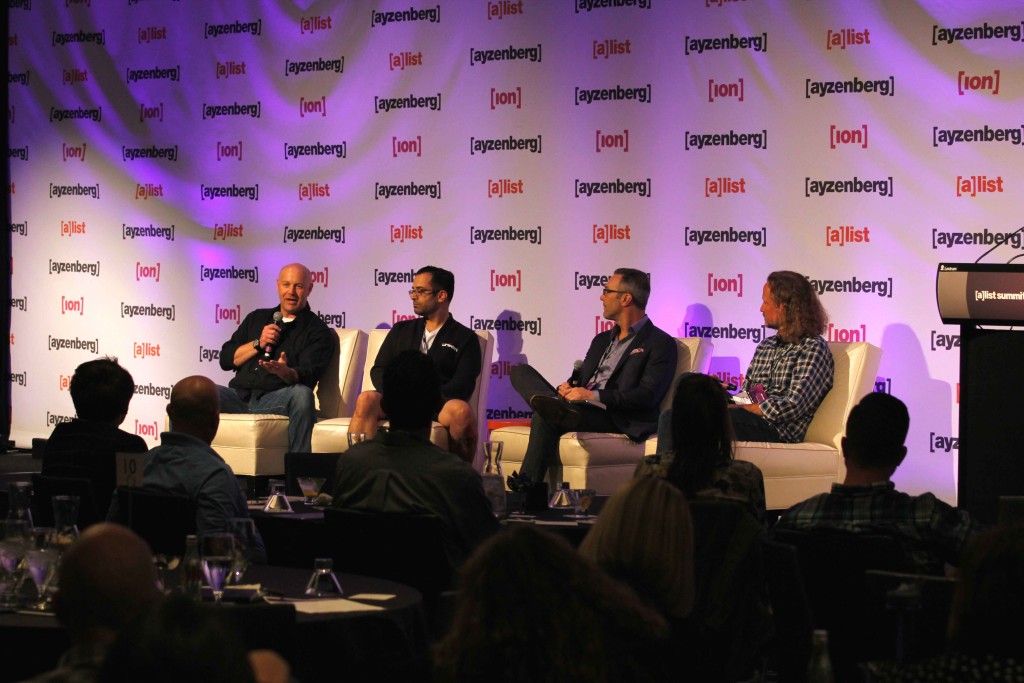The [a]list summit was packed with meaningful presentations, and one of them centered around the how the relationship between gamers and brands has shifted from one of consumer and creator to mutual collaboration, with a growing emphasis on creating entertainment value together with the gamers.
Michael Cai, Interpret’s senior vice president of research for video games and technology, moderated a discussion Wednesday at the W Hotel in Seattle on how publishers and brands are becoming facilitators of the consumer desire to create and produce.
Andy Swanson, Twitch’s vice president of eSports:
“You can’t say ‘I want to market to eSports.’ You have to be more focused. What is the demographic you want to reach? What level of penetration do you want to have? You have to understand the content. You’re going to want to look for titles and communities that are similar.
“Last year we saw the non-gaming brands standing around the pool, dipping their toes, wondering ‘who’s going to do the cannonball?’
“Brands need to understand the eSports calendar, just as they would with major sports.
“Endemic brands have really powered eSports.
“ESports broadcasts are a lot like poker. It took off two years ago. The eSports industry allows for viewers to see it from another perspective.
“Creating content that’s easily engaging is going to mature.
“The gold rush for games is coming from a publisher’s perspective.
Dan Ciccone, rEvXP’s managing director and agent for OpTic Gaming:
“Don’t get hung up with a particular game. It’s the ‘typical geek culture’ aspect and lifestyle that’s appealing. Some of it is stereotypical, but their social lifestyle revolves around it. But don’t get too hung up on it.
“If you want to understand what the mobile future of eSports will be, download Vainglory or Clash Royale.
“The eSports audience is already there. … It was not a real surprise when Pepsi got involved in the space. 2016 is very transformative because mainstream media is turning it to the limelight.
“ESports has provided a creative opportunity to take a risk. Turtle Wax is a great example … There’s definitely a secret sauce.
“Brands need to bring value into the space.
Rahul Sood, CEO of UNIKRN:
“Imagine watching Russell Wilson practice for six hours, and then go and practice based on what you were just watching. That’s what gamers are doing at home nowadays.
“Brands have to be creative on how to leverage social as a platform. You have to get in front of this audience in a relevant way that is authentic because the gamers are very fickle.
“The audience loves, eats and sleeps this thing day and night.
“There’s no better way to learn eSports than from your kids.
“With League of Legends, Riot Games is like the Ferrari in the space.
“You have to be authentic and relevant in the space. Brands have to think out of the box and not attach media ROI.
“One of the biggest challenges in eSports is underground, unregulated gambling where kids can gamble their virtual currency (real money), and they stream it, too. It needs to be regulated. Our eyes and ears need to be out for this. It shouldn’t be happening.
Matt West, Ayzenberg’s director of content strategy:
“How do I understand what’s happening on the screen with broadcasts? The NFL does a great job of walking you through everything on-screen. ESports needs to create understanding and widen out the opportunity to experience growth. Can you create context? That’s a huge opportunity right now.
“Everyone is going to have a different view of what their KPI and ROI is.
“ESports is trying to align everyone’s interests, and provide a lot of context.
“Mobile eSports is catching up. The technology is definitely there.
“How do we reach bigger people? Investment, structure, organization and align everything.
“Maybe you shouldn’t be there at all. Maybe it’s the not space for you.

